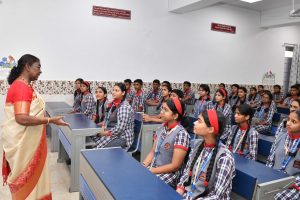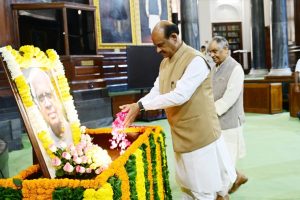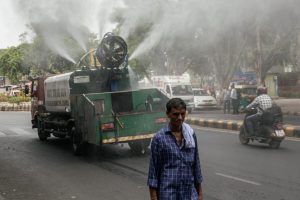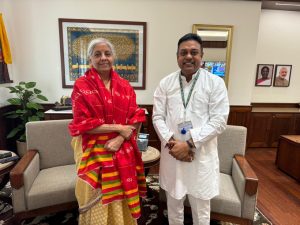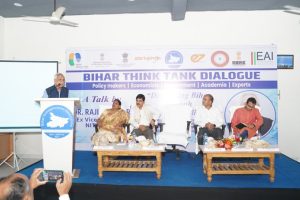Victory over poverty elusive; 90 pc of poor in rural areas, children most vulnerable

Absolute reduction in MPI value from 2015-2016 to 2019-2021
By Pradeep Kumar Panda
Bhubaneswar, October 19: As per 2022 Global Multidimensional Poverty Index, across 111 countries, 1.2 billion people—19.1 per cent live in acute multidimensional poverty and half of these people (593 million) are children under age 18. In India, 415 million people exited poverty between 2005-06 and 2019-21. However, 16.4 per cent of India’s population still live in poverty.
The Global Multidimensional Poverty Index (MPI) uses the most recent comparable data available for 111 countries — 23 low-income countries, 85 middle-income countries and three high-income countries. These countries — home to 6.1 billion people, 1.2 billion (or 19.1 per cent) of whom live in poverty – account for about 92 per cent of the population in developing regions.
The global MPI shows who they are, where they live and what deprivations hold them back from achieving the wellbeing they deserve. The MPI values, the incidence and intensity of poverty, and component indicators are disaggregated by age group, rural and urban areas and gender of the household head as well as for 1,287 subnational regions. Trends in reducing MPI values are available for 81 countries and 810 subnational regions, as well as for age groups and areas. These estimates help in meeting the central, transformative promise of the 2030 Agenda for Sustainable development: to leave no one behind.
The global Multidimensional Poverty Index (MPI) is a key international resource that measures acute multidimensional poverty across more than 100 developing countries. First launched in 2010 by the Oxford Poverty and Human development Initiative at the university of oxford and the Human development report office of the United Nations Development Programme, the global MPI advances Sustainable development Goal 1, holding the world accountable to its resolution to end poverty in all its forms everywhere.
The reduction in Multidimensional Poverty Index (MPI) value in India was swift across the two most recent periods. MPI estimates based on the recently released 2019-2021 Demographic and Health Survey for the country show that 415 million people exited poverty between 2005-2006 and 2019-2021, including about 140 million since 2015-2016 and that the country’s MPI value and incidence of poverty were both more than halved. The MPI value fell from 0.283 in 2005-2006 to 0.122 in 2015-2016 to 0.069 in 2019-2021, and the incidence of poverty fell from 55.1 per cent to 27.7 per cent to 16.4 percent.
The effects of the COVID-19 pandemic on poverty India cannot be fully assessed because 71 percent of the data from the 2019-2021 Demographic and Health Survey for the country were collected before the pandemic. But the results are striking, showing a significant reduction in all 10 MPI deprivations among poor people. Still, major challenges remain.
The 2019-2021 data show that about 16.4 per cent of India’s population live in poverty, with an average intensity of 42.0 per cent. About 4.2 per cent of the population live in severe poverty (meaning their deprivation score is 50 per cent or higher). About 18.7 per cent of people, roughly the same proportion as in 2015-2016, are vulnerable to poverty because their deprivation score ranges from 20 per cent to 33 per cent. Two-thirds of these people live in a household in which at least one person is deprived in nutrition — a worrying statistic. Based on 2020 population data for India, it has by far the largest number of poor people worldwide (228.9 million), followed by Nigeria (96.7 million projected in 2020). Rural disparities are stark. The percentage of people who are poor is 21.2 percent in rural areas compared with 5.5 per cent in urban areas. Rural areas account for nearly 90 per cent of poor people: 205 million of the nearly 229 million poor people live in rural areas — making them a clear priority. Only 23 countries covered have a higher proportion of poor people living in rural areas.
Among poor people, deprivations in cooking fuel and housing are the most common, followed by nutrition and sanitation. Because deprivations in nutrition have a larger weight (1/6 instead of 1/18), they contribute by far the most to MPI value — nearly as much as cooking fuel, housing and sanitation combined. Despite progress, India’s population remains vulnerable to the mounting effects of the COVID-19 pandemic and to rising food and energy prices. Integrated policies tackling the ongoing nutritional and energy crises should be a priority.
Children are still the poorest age group. More than one in five children are poor (21.8 percent) compared with around one in seven adults (13.9 percent). This translates to 97 million poor children. India is the only country in South Asia in which poverty is significantly more prevalent among female-headed households than among male-headed households. About 19.7 per cent of people living in female-headed households live in poverty compared with 15.9 per cent in male-headed households. One in seven households is a female-headed household, so around 39 million poor people live in a household headed by a woman.
Of the nearly 415 million people who exited poverty in the 15 years prior to the COVID-19 pandemic, roughly 275 million did so between 2005-2006 and 2015/2016, 49 and 140 million did so between 2015-2016 and 2019-2021. Deprivations in all 10 MPI indicators saw statistically significant reductions in both periods.
India’s reduction in MPI value continued to be pro-poor in absolute terms, as it was from 2005-2006 to 2015-2016. Rural areas were the poorest and saw the fastest reduction in MPI value. The incidence of poverty fell from 36.6 per cent in 2015-2016 to 21.2 per cent in 2019-2021 in rural areas and from 9.0 per cent to 5.5 per cent in urban areas. Children, the poorest age group, saw the fastest reduction in MPI value. The incidence of poverty fell from 34.7 per cent to 21.8 per cent among children and from 24.0 per cent to 13.9 per cent among adults. Similarly, the poorest caste and religious groups saw the fastest absolute reduction in the recent period. This general pattern continues across the states and union territories.
Bihar, the poorest state in 2015-2016, saw the fastest reduction in MPI value in absolute terms. The incidence of poverty there fell from 77.4 per cent in 2005-2006 to 52.4 per cent in 2015-2016 to 34.7 per cent in 2019-2021.
It is also essential to scrutinize changes using the relative reduction in poverty—the percentage of the distance to zero poverty covered. Nationally, the relative reduction from 2015-2016 to 2019-21 was faster: 11.9 per cent a year compared with 8.1 per cent from 2005/2006 to 2015/2016. This is unsurprising because relative poverty reduction is easier to achieve when starting levels of poverty are lower. In relative terms adults covered more distance to zero poverty than children did.
Across states and union territories the fastest reduction in relative terms was in Goa, followed by Jammu and Kashmir, Andhra Pradesh, Chhattisgarh and Rajasthan. In relative terms the poorest states have not caught up. Of the 10 poorest states in 2015-2016, only one (West Bengal) was not among the 10 poorest in 2019-2021. Bihar, Jharkhand, Meghalaya, Madhya Pradesh, Uttar Pradesh, Assam, Odisha, Chhattisgarh and Rajasthan remain among the 10 poorest.
Addressing poverty requires better data. The infrequency of household surveys makes it difficult to assess the true impact of the COVID-19 pandemic on poverty. The data revolution must not leave the collection of poverty data behind.
(Author is a Bhubaneswar-based economist)


